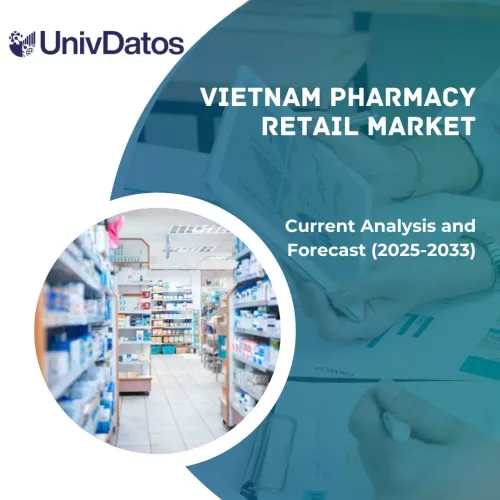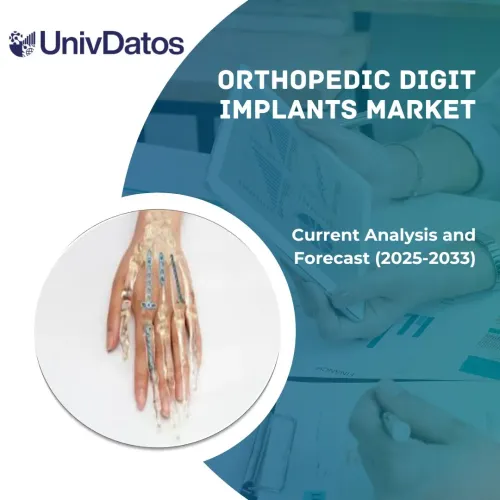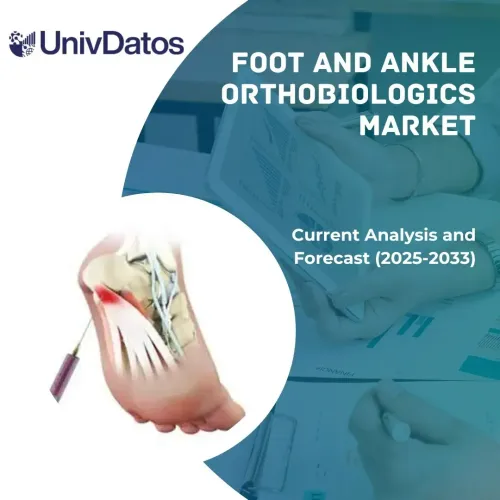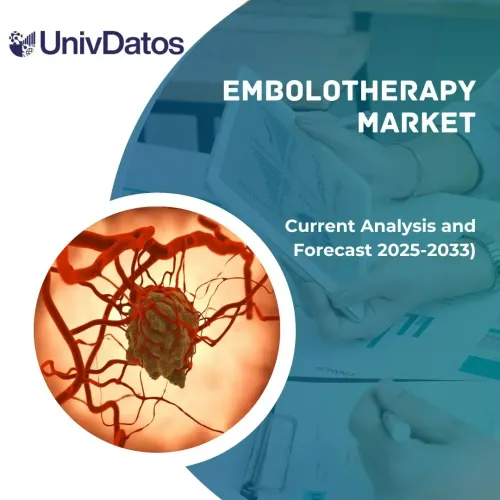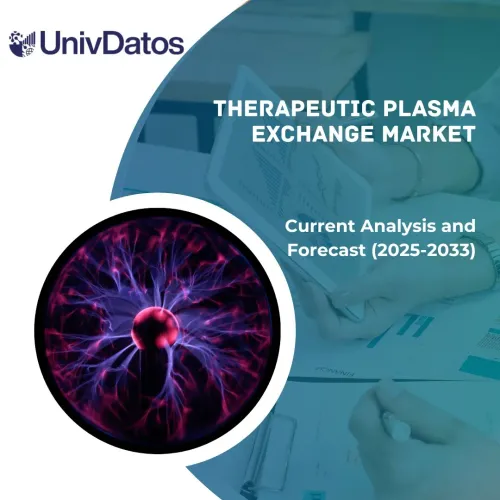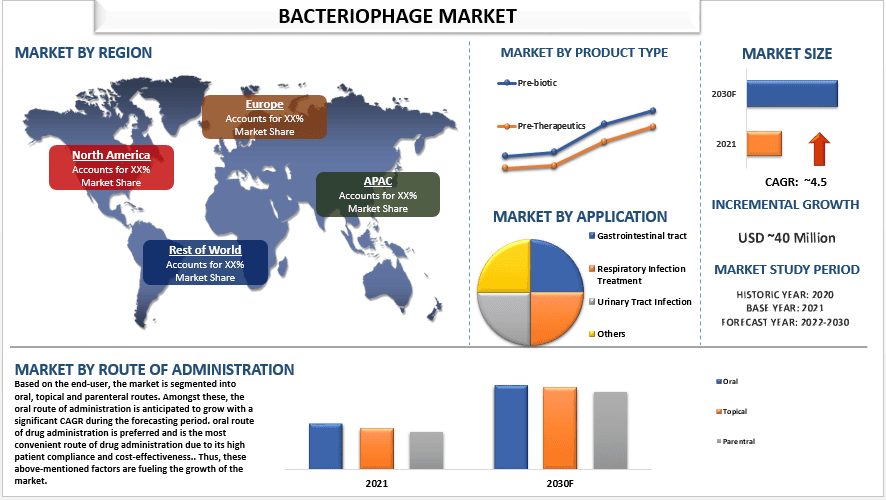
2021年噬菌体市场价值为4000万美元,预计从2022-2030年以4.5%的复合年增长率增长。 噬菌体需求的激增归因于食源性疾病的日益流行。食源性疾病是由变质食物中存在的细菌引起的。这种情况越来越普遍。例如,根据卫生人类服务部2019年的报告,在美国,每年约有六分之一的人患上食源性疾病。此外,主要参与者之间的合作和伙伴关系等策略进一步推动了噬菌体市场的增长。例如,2019年,开发精密抗菌疗法的生物技术公司Locus Bioscience与强生公司的Janssen Pharmaceutical Companies合作,开发、生产和商业化CRISPR-Cas3增强型噬菌体(“crPhage™”)产品,目标是两种关键细菌病原体,用于潜在治疗呼吸道和其他器官系统的感染。因此,预计上述因素将推动该区域的市场增长。
市场上一些主要的运营公司包括Armata Pharmaceuticals, Inc.、Life Extension.、Arthur Andrew Medical.、Biochimpharm、Micreos、biostation.、Probiotic America, LLC.、Eliava BioPreparations、Locus Biosciences, Inc.、BiomX
报告中提出的见解
“在产品类型中,预治疗细分市场在2021年市场中以显著的复合年增长率增长”
根据产品类型,市场分为益生菌和预治疗剂。其中,预计预治疗细分市场在预测期内将以显著的复合年增长率增长。噬菌体已被证明对耐抗生素细菌有效,并且有潜力用作抗生素的补充疗法。通过靶向特定细菌,噬菌体可以帮助减少抗生素耐药性的发展并改善治疗效果。此外,对预防性医疗保健的需求不断增长。随着慢性疾病的增加和人口老龄化,人们越来越关注预防疾病,而不仅仅是在疾病发生后进行治疗。此外,噬菌体已被证明具有作为细菌感染的预防性治疗的潜力,预计这将推动对预治疗产品的需求。
“在应用方面,胃肠道细分市场在2021年的市场中以显著的复合年增长率增长”
根据应用,市场分为胃肠道、呼吸道感染、尿路感染和其他。其中,胃肠道细分市场以显著的复合年增长率增长。胃肠道是细菌感染的常见部位,噬菌体已被证明在治疗和预防这些感染方面有效。此外,人们越来越认识到噬菌体在治疗胃肠道感染方面的潜在益处,以及噬菌体在治疗其他细菌感染方面的日益使用,预计将推动该细分市场的市场增长。
“在给药途径中,肠胃外途径细分市场在2021年的市场中以显著的复合年增长率增长”
根据最终用户,市场分为口服、局部和肠胃外。其中,预计肠胃外途径在预测期内将以显著的复合年增长率增长。某些抗生素在到达循环系统之前会被肝脏代谢,为了防止其代谢,这些药物以肠胃外方式给药。此外,肠胃外途径能够快速传递精确剂量的药物。此外,这些途径绕过肝脏,从而防止其预代谢。因此,上述因素正在推动该细分市场的市场增长。
“预计北美将在2021年以噬菌体市场的显著复合年增长率增长”
预计北美将在2021年的市场中以显著的复合年增长率增长。这归因于该地区政府倡议的兴起。例如,规划和评估助理部长2020年的报告发布了一项国家行动计划,以应对2020-2025年的抗生素耐药性细菌,该计划提出了协调一致的战略行动,美国政府将在未来五年内采取这些行动,以改善所有美国人的健康和福祉,从而改变抗生素耐药性的进程。因此,预计北美将在预测期内以显著的复合年增长率增长。
噬菌体市场报告覆盖范围
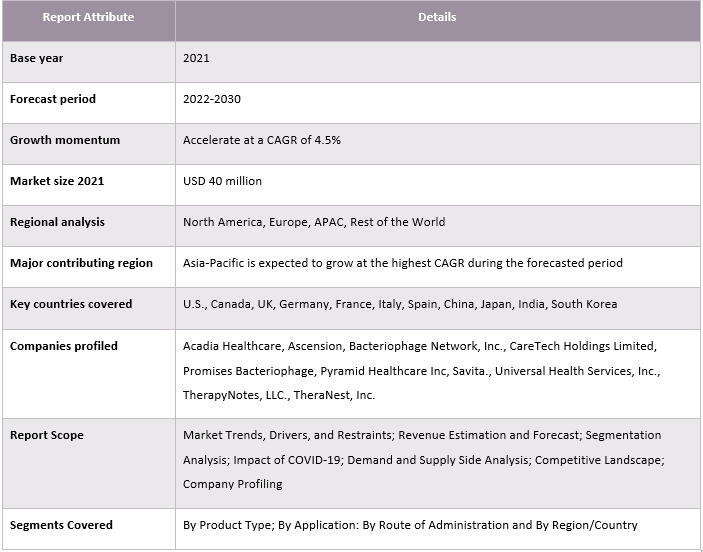
购买本报告的理由:
- 该研究包括由经过验证的关键行业专家验证的市场规模和预测分析。
- 该报告概述了整个行业在短短一瞥下的整体表现。
- 该报告深入分析了主要的行业同行,主要关注关键业务财务、产品组合、扩张策略和最新发展。
- 详细检查行业中普遍存在的驱动因素、限制、主要趋势和机遇。
- 该研究全面涵盖了不同细分市场的市场。
- 对行业进行深入的区域层面分析。
定制选项:
全球噬菌体市场可以根据需求或任何其他细分市场进一步定制。除此之外,UMI 明白您可能有自己的业务需求,因此请随时与我们联系以获取完全满足您需求的报告。
目录
噬菌体市场分析的研究方法 (2022-2030)
分析历史市场、评估当前市场以及预测全球噬菌体市场的未来市场是创建和分析全球主要地区噬菌体采用情况的三个主要步骤。 进行了详尽的二级研究,以收集历史市场数据并评估当前市场规模。 其次,为了验证这些见解,我们考虑了许多发现和假设。 此外,我们还与全球噬菌体市场价值链中的行业专家进行了广泛的初步访谈。 在通过初步访谈对市场数据进行假设和验证后,我们采用了自上而下/自下而上的方法来预测完整的市场规模。 之后,采用市场细分和数据三角测量方法来评估和分析行业相关细分市场和子细分市场的市场规模。 详细方法如下:
历史市场规模分析
第一步:深入研究二级来源:
进行了详细的二级研究,通过公司内部来源(如年度报告和财务报表、业绩演示文稿、新闻稿等)以及外部来源(包括期刊、新闻和文章、政府出版物、竞争对手出版物、行业报告、第三方数据库和其他可靠的出版物)来获取噬菌体市场的历史市场规模。
第二步:市场细分:
在获得噬菌体市场的历史市场规模后,我们进行了详细的二级分析,以收集主要地区不同细分市场和子细分市场的历史市场见解和份额。 报告中包含的主要细分市场包括产品类型、应用和给药途径。 此外,还进行了国家层面的分析,以评估该地区测试模型的总体采用情况。
第三步:因素分析:
在获得不同细分市场和子细分市场的历史市场规模后,我们进行了详细的因素分析,以评估噬菌体市场的当前市场规模。 此外,我们使用因变量和自变量(例如产品类型、应用和噬菌体市场的给药途径)进行了因素分析。 考虑到全球噬菌体市场领域的顶级合作伙伴关系、并购、业务扩张和产品发布,我们对需求和供应方情景进行了彻底的分析。
当前市场规模评估与预测
当前市场规模:基于上述 3 个步骤的可行见解,我们得出了当前市场规模、全球噬菌体市场的关键参与者以及细分市场的市场份额。 所有必需的百分比份额拆分和市场细分都是使用上述二级方法确定的,并通过初步访谈进行了验证。
评估与预测:对于市场评估和预测,我们为不同的因素分配了权重,包括驱动因素和趋势、限制因素以及利益相关者的可用机会。 在分析了这些因素后,我们应用了相关的预测技术,即自上而下/自下而上的方法,以得出 2028 年全球主要市场不同细分市场和子细分市场的市场预测。 用于评估市场规模的研究方法包括:
- 该行业的市场规模,以收入(美元)以及国内主要市场中噬菌体市场的采用率来衡量
- 所有百分比份额、拆分和市场细分市场和子细分市场的细分
- 全球噬菌体市场的关键参与者,就所提供的产品而言。 此外,这些参与者为在快速增长的市场中竞争而采取的增长策略
市场规模和份额验证
初步研究:与主要意见领袖 (KOL) 进行了深入访谈,包括主要地区的高层管理人员(CXO/VP、销售主管、营销主管、运营主管、区域主管、国家主管等)。 然后对初步研究结果进行总结,并进行统计分析以证明所述假设。 将初步研究的输入与二级研究结果结合起来,从而将信息转化为可操作的见解。
不同地区的初步参与者划分
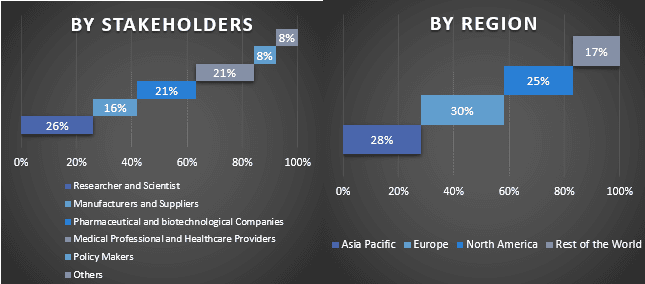
市场工程
采用数据三角测量技术来完成整体市场评估,并得出全球噬菌体市场每个细分市场和子细分市场的精确统计数据。 在研究了全球噬菌体市场中疾病类型和服务类型等领域的各种参数和趋势后,将数据分为多个细分市场和子细分市场。
全球噬菌体市场研究的主要目标
该研究指出了全球噬菌体市场的当前和未来市场趋势。 投资者可以获得战略见解,以便将其投资判断建立在研究中进行的定性和定量分析之上。 当前和未来市场趋势决定了市场在区域层面的总体吸引力,从而为工业参与者提供了一个平台,可以利用未开发的市场来获得先行者优势。 研究的其他定量目标包括:
- 分析噬菌体市场当前和预测的市场规模,以价值(美元)计算。 此外,分析不同细分市场和子细分市场的当前和预测的市场规模
- 研究中的细分市场包括疾病类型和服务类型领域。
- 定义和分析噬菌体行业的监管框架
- 分析与各种中介机构相关的价值链,同时分析行业的客户和竞争对手行为
- 分析主要地区噬菌体市场当前和预测的市场规模
- 报告中研究的地区的主要国家包括亚太地区、欧洲、北美和世界其他地区
- 噬菌体市场的公司概况以及市场参与者为在快速增长的市场中维持发展而采取的增长战略
- 深入的行业区域层面分析
相关 报告
购买此商品的客户也购买了

